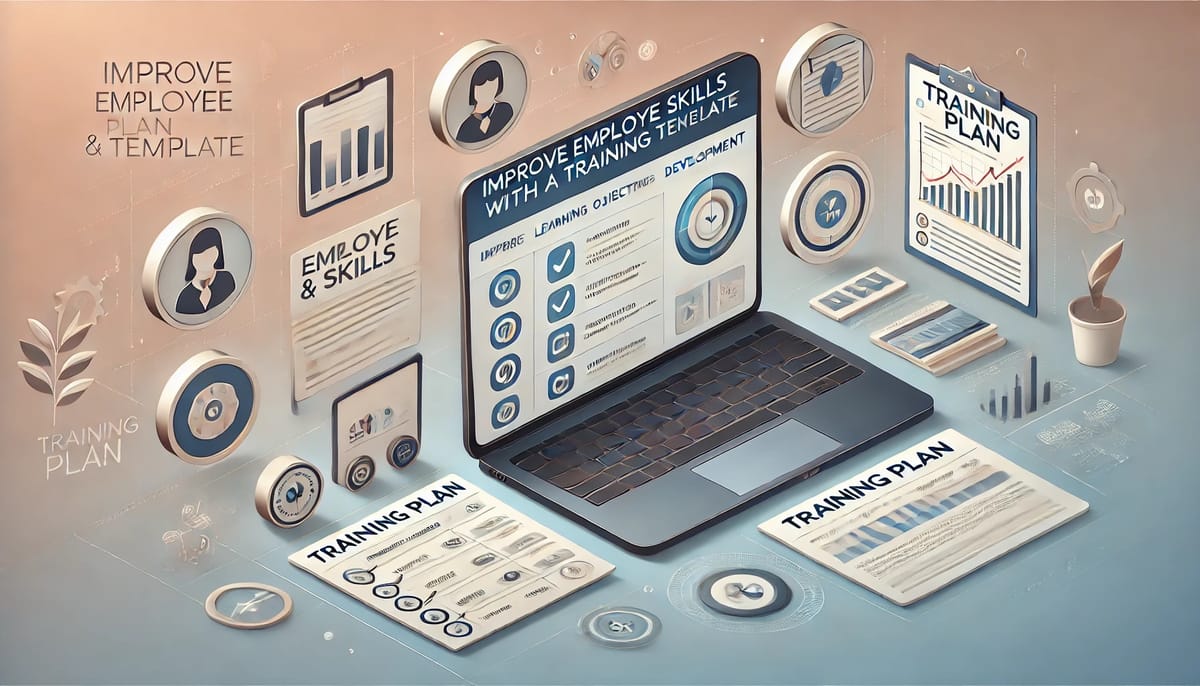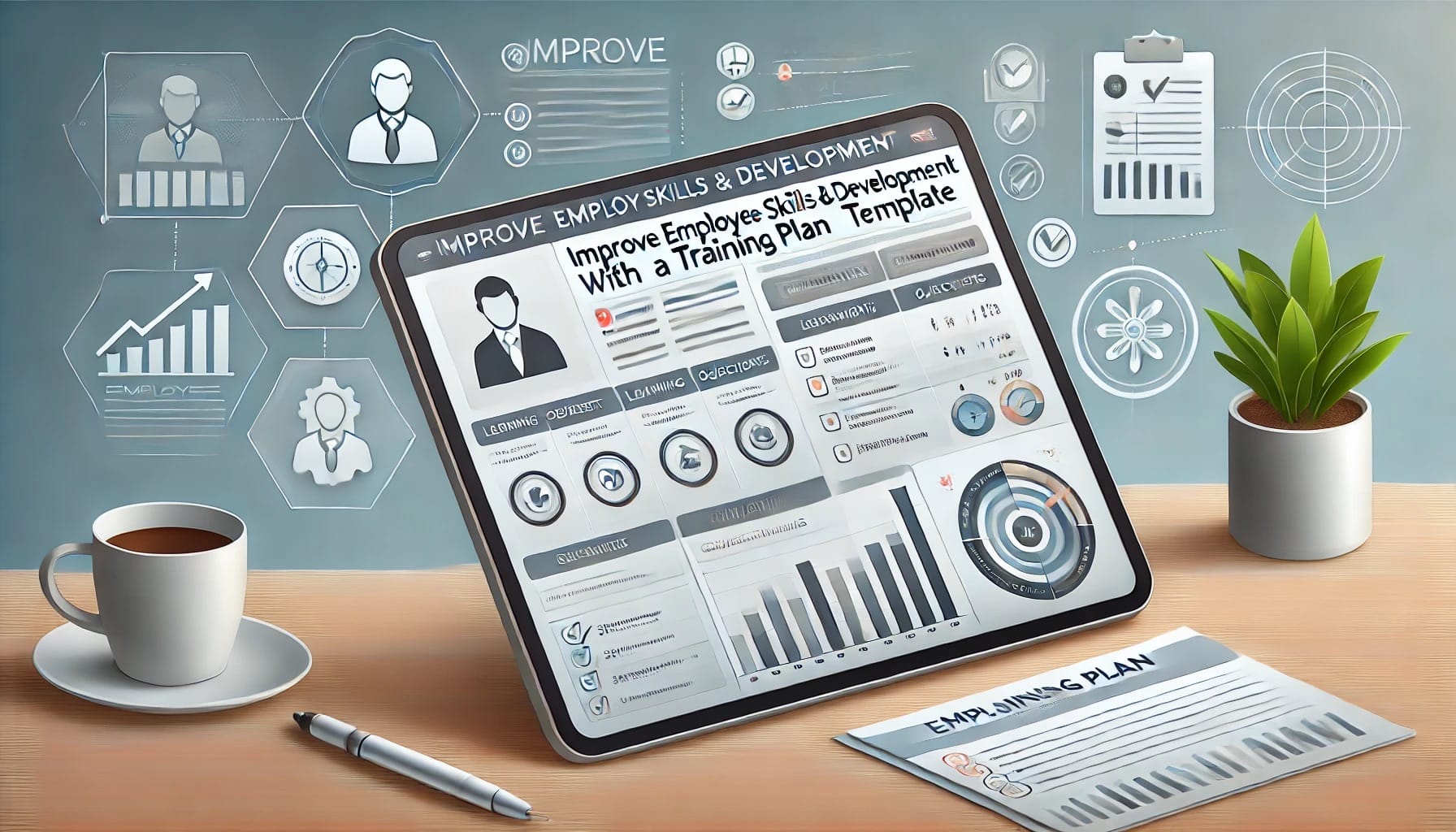Improve Employee Skills & Development with a Training Plan Template
Enhance your workforce with a structured employee training plan. Discover key benefits, templates, and strategies to boost productivity and retention.

In today's fast-evolving business landscape, companies must continuously adapt, modernize internal processes, and upskill employees to stay competitive. A well-structured employee training plan is the foundation of any organization's learning and development strategy. It ensures that employees acquire the necessary skills to meet business objectives, fill knowledge gaps, and align with company policies and technological advancements.
Whether you aim to onboard new hires, improve existing employee competencies, or introduce a new company policy, a structured training plan streamlines the entire process. This guide provides a comprehensive overview of employee training plans, their benefits, essential components, types, and ready-to-use templates for immediate implementation.

What is an Employee Training Plan?
An employee training plan is a strategic document outlining the objectives, structure, methodologies, and resources required for professional development initiatives. These plans help businesses ensure their workforce is equipped with the skills necessary for their roles and long-term success.
Key Elements of an Employee Training Plan:
- Purpose and Objectives: Define the reason for the training and its expected outcomes.
- Target Audience: Identify employees who require training and their current skill levels.
- Training Methods: Specify whether the training is conducted online, in-person, or via blended learning.
- Training Materials: List resources such as guides, video tutorials, e-learning platforms, and assessment tools.
- Performance Metrics: Establish KPIs to measure the effectiveness of the training.
- Timeline and Schedule: Define training duration, session frequency, and milestones.
- Evaluation and Feedback: Implement assessment mechanisms to gauge progress and optimize future training programs.
Benefits of Implementing an Employee Training Plan
A well-designed training plan provides significant advantages for both employers and employees:
1. Reduces Knowledge Gaps
Employees often have skill deficiencies that hinder productivity. Training programs identify and address these gaps, ensuring a competent workforce.
2. Enhances Employee Performance
Training boosts efficiency and improves performance by equipping employees with the necessary skills to execute tasks with precision and confidence.
3. Increases Employee Retention
Investing in employee development fosters job satisfaction and loyalty, reducing turnover rates.
4. Strengthens Leadership and Succession Planning
A well-trained workforce ensures seamless leadership transitions and prepares employees for future managerial roles.
5. Boosts Employee Morale and Job Satisfaction
Continuous learning opportunities create a more engaged and motivated workforce, reducing stress and frustration.
Essential Components of a Robust Training Plan
A training plan should be structured and detail all relevant aspects of the program. Below are key elements to include in an effective training strategy:
1. Training Objectives
- Define measurable goals aligned with organizational needs.
- Identify whether the focus is on technical skills, leadership, or compliance training.
2. Type of Training
- Onboarding Training: For new hires to familiarize them with company policies and procedures.
- Technical Training: To enhance employees' technical and industry-specific skills.
- Soft Skills Training: To develop communication, teamwork, and problem-solving abilities.
- Compliance Training: To ensure adherence to regulations and company policies.
3. Key Performance Indicators (KPIs)
Measuring the effectiveness of training is crucial. Some essential KPIs include:
- Training attendance rate
- Course completion rate
- Assessment scores
- Learner satisfaction levels
- Training Return on Investment (ROI)
4. Training Schedule and Timeline
- Specify start and end dates.
- Define session durations and frequency.
- Allocate time for assessments and feedback.
5. Training Methods
Depending on the company’s needs and employee availability, training can be conducted via:
- Instructor-led training (ILT) – Classroom-based learning.
- Online training (e-learning platforms, webinars).
- Blended learning (a combination of ILT and digital training).
- Workshops, mentorship programs, and peer learning.
6. Training Materials and Tools
- Digital resources (e-books, online courses, software tools).
- Learning Management Systems (LMS) for tracking progress.
- Interactive methods (quizzes, case studies, role-playing).
7. Assessment and Feedback Mechanisms
- Conduct post-training evaluations.
- Use surveys, quizzes, or feedback forms to gauge training effectiveness.
- Implement performance tracking systems to measure improvements.
Types of Training Plan Templates
Several templates can be used to structure employee training, depending on specific objectives. Below are five commonly used training templates:
1. New Hire Onboarding Training Plan
A structured onboarding plan ensures that new employees integrate seamlessly into the company, reducing confusion and increasing productivity from day one.
Key Features:
- Overview of company policies, culture, and expectations.
- Introduction to tools, software, and workflows.
- Milestone-based progress tracking.
2. Training Needs Assessment Plan
Before implementing training, businesses must identify knowledge gaps. This template helps HR teams assess employee skill levels and determine the necessary training interventions.
Key Features:
- Employee competency evaluation.
- Comparative analysis of required vs. existing skills.
- Recommendations for customized training programs.
3. Staff Training Plan Template
Designed for existing employees, this template helps track ongoing training initiatives, measure progress, and document improvements.
Key Features:
- Individual and team-based training tracking.
- Competency scoring system.
- Visual graphs and progress charts.
4. Individual Employee Training Plan
This personalized approach ensures targeted learning, focusing on an individual’s growth within the company.
Key Features:
- Tailored training modules for specific employees.
- Monthly or quarterly progress tracking.
- Detailed assessment reports.
5. Annual Training Plan Template
A long-term strategic template that outlines an entire year’s worth of training programs, assessments, and development initiatives.
Key Features:
- Quarterly and yearly training objectives.
- Budget allocation for training resources.
- Performance tracking for long-term development.
Conclusion
A well-planned employee training strategy is essential for business success. Whether it's onboarding new hires, upskilling existing employees, or preparing future leaders, an effective training plan improves efficiency, retention, and company performance.
By using structured training templates, businesses can streamline learning initiatives and ensure measurable outcomes. Investing in continuous learning benefits both employees and employers, fostering a culture of innovation and growth.
Start implementing a robust training plan today to future-proof your workforce and achieve long-term business success!
Source: Training Plan Template | Boost Your Employees and Teaching!
Don’t forget to explore our previous post: Step-by-Step Walkthrough for a Balanced Scorecard Template





